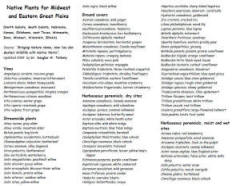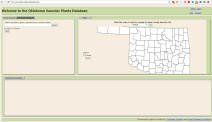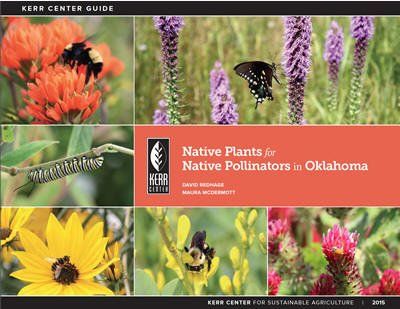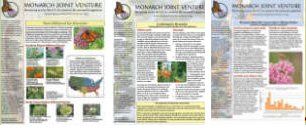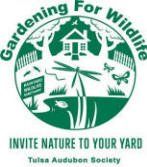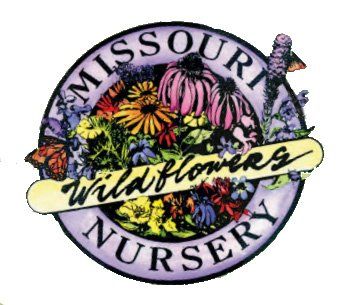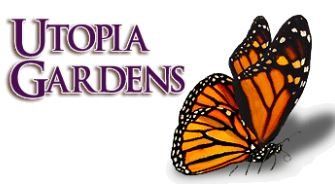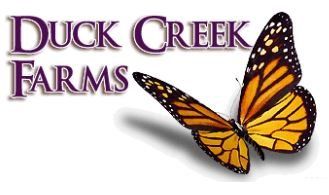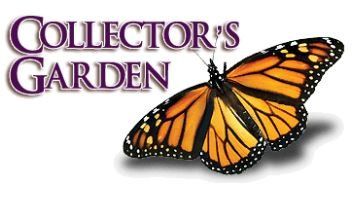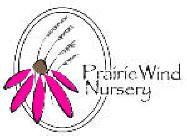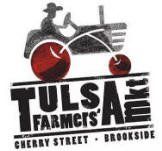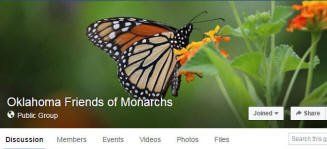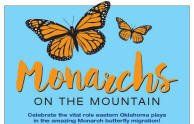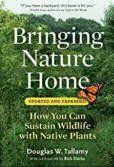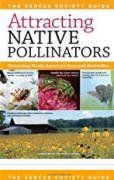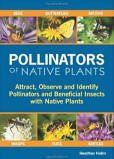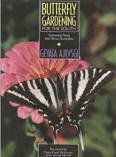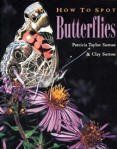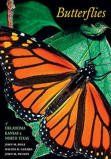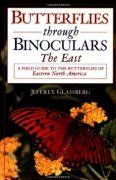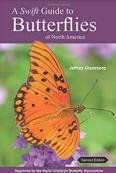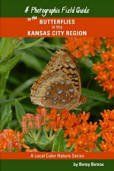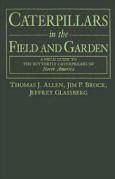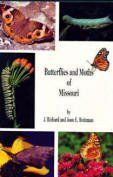Native Gardening, Pollinator & Butterfly Information
Here is an index to the sections below on this web page
- Host Plants for Butterflies
- Nectar Plants for Butterflies/Hummingbirds/Bees
- Native Plant Information
- Sources for Native Plants
- Monarch Butterflies
- Butterfly Gardening
- Butterflies Your Are Most Likely To See In Your Backyard
- Butterfly & Moth Species By County
- Native Gardening, Pollinator & Butterfly Books
- Local Butterfly Information & Links
- National Butterfly Information & Links
- Oklahoma Butterfly Watching Locations
Host Plants for Butterflies
- Tropical Milkweed (which is Orange) - Monarch Butterflies, Non-native for OK, but okay to use, an annual
- Swamp Milkweed - Monarch Butterflies, Good for Wet Areas
- Butterfly Weed - Monarch Butterflies, Blooms in May good for Spring Migration
- Showy Milkweed - Monarch Butterflies
- Green Antelope Horn Milkweed - Monarch Butterflies, Blooms in April good for Spring Migration
- Common Milkweed - Monarch Butterflies, Can be very invasive
- Spicebush - Spicebush Swallowtail
- Pipevine - Pipevine Swallowtail
- Passionflower Vine - Gulf Fritillary and Variegated Fritillary
- Parsley - Black Swallowtail
- Fennel - Black Swallowtail
- Bronze Fennel - Black Swallowtail
- Rue - Black Swallowtail
- Dill - Black Swallowtail
- False Nettle - Red Admirals and Question Marks
- Wooly Croton - Goatweed Leafwings
- Snapdragons - Common Buckeye
- Frogfruit - Common Buckeye
- Hackberry Tree - Hackberry Emperor and American Snout
- Elm Tree - Question Mark and Mourning Cloak
- Rudbeckia (Black-eyed Susan) - Gorgone Checkerspot
Nectar Plants for Butterflies/Hummingbirds/Bees
- Pentas especially the red color
- Mexican Zinnia: Profusion Orange and Profusion White
- Pincushion Flower
- Purple Coneflower
- Pale Purple Coneflower
- Lantana
- Mexican Sunflower
- Butterfly Weed
- Verbena bonariensis
- Garden Phlox
- Blue Aster Blooms in fall
- Red Salvia
- Purple Salvia
- Bee Balm
- Black-eyed Susan(all Rudbeckia are great plants for nectar)
- Buttonbush
- Golden Crownbeard Blooms in fall
- Native Honeysuckle
- Turk's Cap
- Garlic Chives
Native Plant Information
Click here for
Doug Tallamy's master lists of all plant species
and the number of insect
species each hosts
, showing the stark difference between native and
alien species (in Excel spreadsheet format).
The Kerr Center for Sustainable Agriculture
offers lots of great
information on plants for pollinators.
Click here for their Pollinator Library
, with dozens of free
publications on this subject.
Click here
for how they created a pollinator friendly
landscape at the Kerr Center.
One
of the many great Kerr Center resources,
Native Plants for Native Pollinators in Oklahoma
is a
beautiful full color guidebook to native plants for pollinators
in Oklahoma!
Information on 38 native plants
and the pollinators that visit them, how to use in the
landscape, where to find them and tips for growing.
The
Monarch Joint Venture
has a
library of free downloadable handouts
on monarchs, milkweed,
establishing habitat, and monarch conservation topics.
Local Sources For Native Plants
Tulsa Audubon's annual Wildlife Habitat Garden Tour and Plant
Sale
features local gardens and yards that have been turned
into animal-friendly spaces, along with a plant sale from
companies featuring native and wildlife friendly plants. Many of
the plant vendors listed above are featured on this tour each
year.
Missouri Wildflowers
Nursery
9814 Pleasant Hill Road, Jefferson City, MO 65109
573-496-3492
mowldflrs@socket.net
Brookside
Whole Foods Parking Lot
41st and Peoria, Tulsa, OK
Every Wed., Apr. 12-Oct. 11 7:30-11am
Winter Market: Mar. 11 & Mar. 25 8:30-11am
Whole Foods Parking Lot
41st and Peoria, Tulsa, OK
Every Wed., Apr. 12-Oct. 11 7:30-11am
Winter Market: Mar. 11 & Mar. 25 8:30-11am
Monarch Butterflies
Monarch Watch
is a nonprofit education, conservation, and research program
based at the University of Kansas that focuses on the monarch
butterfly, its habitat, and its spectacular fall migration.
Oklahoma Friends of Monarchs
is a Facebook group promoting
Monarchs in the state of Oklahoma, supportive to those who are
interested in providing habitat, or in bringing in Monarchs to
raise. We are a network of resources for seeds, plants, and
sharing eggs/caterpillars within the group.
Since Monarch conservation is
a responsibility of Mexico, Canada and the United States, the
Monarch Joint Venture
works throughout the U.S. to conserve
and protect monarch populations and their migratory phenomena by
implementing science-based habitat conservation and restoration
measures in collaboration with multiple stakeholders. They have
a
library of free downloadable handouts
on monarchs, milkweed,
establishing habitat, and monarch conservation topics.
Monarchs on the Mountain
is an annual celebration of the
vital role eastern Oklahoma play sin the amazing migration of
Monarch Butterflies. Held at Tulsa's Turkey Mountain Urban
Wilderness area.
Butterfly Gardening
When you create a garden, you usually grow plants
When you create a butterfly garden, you strive to grow butterflies
Location
- Plant your garden in sun as butterflies need sun (they are solar powered) and plants produce more nectar in the sun.
- In the hot Oklahoma days of July and August it helps to have some of your garden in partial shade during the afternoon as it can get too hot for butterflies in full sun.
- Shelter from the wind in all or part of the garden is beneficial.
Plants: Types and Distribution
- There are two categories of plants for butterflies. Nectar plants for adults and food plants for the caterpillars.
- Choose mainly nectar plants to get started. A variety of butterflies will come to the same nectar plant, but food plants for caterpillars usually are specific for only one or a very small range of butterfly species. Native plants are best as they provide for both.
Nectar Plants
- Choose plants that will do well in the local environment. Not all flowering plants are a nectar source for butterflies. Find out which ones work from local resources.
- Plant your nectar plants in masses. It is better to have a large number of a few varieties rather than a few plants of a number of varieties.
- Choose plants so that your garden will give continuous bloom once the butterflies find your space. Each variety does not need to be always blooming, but part of your garden needs to be blooming all the time.
Food Plants
- To select the proper food plants you need to know what butterflies are present in your local area. Butterflies are selective on which plants they lay their eggs. So you need to know the butterfly species to know which plant to use.
- An easy group to start with is providing parsley or bronze fennel for the Black Swallowtail. Then you can learn about the specific needs of other butterflies.
- Except for rare instances, caterpillars use only native plants for food plants.
Miscellaneous Butterfly Attractors
- Damp area in soil, rocks or mulch
- Areas for basking in early morning sun.
- Over ripe fruit or tree sap.
Don’t Use Chemical Pesticides
- Pesticides kill insects and butterflies are insects.
- Don’t worry about destructive bugs and in time the beneficial ones will establish a healthy balance in your yard.
Enjoy
- Enjoy the show that results from the stage you have set.
Butterflies Your Are Most Likely To See In Your Tulsa Backyard
Common Name Scientific Name
SWALLOWTAILS FAMILY PAPILIONDAE
- Pipevine Swallowtails Battus philenor
- Black Swallowtail Papilio polyxencs
- Giant Swallowtail Papilio cresphontes
- Eastern Tiger Swallowtail Papilio glaucus
- Spicebush Swallowtail Papilio troilus
WHITES & SULPHURS FAMILY PIERIDAE
- Checkered White Pontia protodice
- Cabbage White Pieris rapae
- Clouded Sulphur Colias philodice
- Orange Sulphur Colias eurytheme
- Southern Dogface Colias cesonia
- Cloudless Sulphur Phoebis sennae
- Little Yellow Eurema lisa
- Sleepy Orange Eurema nicipp
- Dainty Sulphur Nathalis iole
GOSSAMER-WINGS FAMILY LYCAENIDEA
- Great Purple Hairstreak Atlides halesus
- Juniper Hairstreak Callophxys gryneus
- Gray Hairstreak Strymon melinus
- Red-banded Hairstreak Calycopis cecrops
- Reakirt’s Blue Hemiargus isola
- Eastern Tailed-Blue Everes comyntas
- Spring/Summer Azure Celastrina ladon/neglecta
BRUSHFOOTS FAMILY NYMPHALIDAE
- American Snout Libytheana carinenta
- Gulf Fritillary Agraulis vanillae
- Variegated Fritillary Euptoieta Claudia
- Silvery Checkerspot Chlosyne nycteis
- Pearl Crescent Phyciodes tharos
- Question Mark Polygonia interrogatiuonis
- American Lady Vanessa virginiensis
- Painted Lady Vanessa cardui
- Red Admiral Vanessa atalanta
- Common Buckeye Junonia coenia
- Red-spotted Purple Limenitis arthemis
- Viceroy Limenitis archippus
- Hackberry Emperor Asterocampa celtis
- Monarch Danaus plexippus
SKIPPERS FAMILY HESPERIIDAE
- Silver-spotted Skipper Epargyreus clarus
- Southern Cloudywing Thorybes bathyllus
- Horace’s Duskywing Erymns horatius
- Funereal Duskywing Erynnis funerali
- Common Checkered-Skipper Pyrgus communis
- Fiery Skipper Hylephila phyleus
- Sachem Atalopedes campestris
Butterfly & Moth Species By County
In 1979 Dr. John
Nelson, Professor Emeritus of Biology at ORU, published A Preliminary
Checklist of the Skippers and Butterflies of Oklahoma in the Proceedings
of the Oklahoma Academy of Science. In that initial list he listed 149
species. Since then, the Oklahoma state list has grown to 200 documented
butterfly species.
Dr. Nelson has retired and John Fisher now maintains the butterfly and
moth lists for the state. The Oklahoma Butterfly Species by County list
is updated as new records are reported and the Oklahoma Moth Species by
County list is updated at least annually. In December, he sends lists of
new county records to the
Lepidopterists Society
for inclusion in their Season Summary data base and report of butterfly
& moth records in the US & Canada.
Since many species only fly for a few weeks each year, a species may not
be listed in a particular county simply because no one was at the right
place & time to see it. For example, the Olive Juniper Hairstreak,
Callophrys gryneus gryneus, was first documented in Osage County in
June, 2002 and Tulsa, Pawnee, Creek, & Washington Counties in April,
2004. Does that mean the Olive Juniper Hairstreak was a new immigrant
into these counties? Probably not, it does mean no one had seen,
documented, and reported the Olive Juniper Hairstreak from these
Counties before.
If you find a new county record, please report your find with a photo or
specimen and the usual who, what, when, & where information to John
Fisher at
rgs455@cox.net
or John
Fisher, 8009 W Parkway Blvd Apt 302, Tulsa OK 74127
Native Gardening, Pollinator & Butterfly Books
Here are some books suggested by Jim Thayer on getting started in studying butterflies. Many of these books are available for purchase at Tulsa Audubon events, Oxley Nature Center , Wild Bird Unlimited, or through Amazon.com. By using the Amazon links provided below Oxley Nature Center & Tulsa Audubon receive a percentage of the sale at no extra cost to you.
Doug
Tallamy is an entomology Professor at the Univ. of Delaware. His
research goal is to better understand the many ways insects
interact with plants and how such interactions determine the
diversity of animal communities. We have brought Dr. Tallamy to
Tulsa several times in recent years, and his books are a
favorite of native plant gardeners.
We highly recommend this
book!!
by
Rick Darke & Doug Tallamy
by The Xerces Society
by Heather Holm
By Geyata Ajilvsgi
by Pat and Clay Sutton
by John Dole, Walter Gerard, & John Nelson
By Jim P. Brock & Kenn Kaufman
By Jeffrey Glassberg
By Jeffrey Glassberg
by Thomas Allen, Jim P. Brock and Jeffrey Glassberg
By J. Richard and Joan E. Heitzman
Local Plant & Butterfly Information & Links
- Oklahoma Vascular Plants Database
- Here is a checklist of Butterflies of Mohawk Park
compiled by Jim Thayer
- Butterfly & moth species records by county for Oklahoma
From John Nelson, Professor Emeritus of Biology at ORU, who has graciously allowed us to post these lists of the documented butterfly & moth species records by county for Oklahoma
- The Tulsa Master Gardeners web site
has a section of information about the butterflies of Tulsa County, featuring photos by TAS member Jim Thayer. (Click on lawn & garden help. Click on Butterflies. There are pictures of the butterflies of the 5 families that are listed on the handout "Butterflies you are most likely to see in your backyard"
- TAS member John Fisher has created the OKLeps Yahoo Discussion Group
for sharing information about the butterflies of Oklahoma.
- Hershel Raney's Random Natural Acts web site
has lots of good photographs of Arkansas butterflies (many of which also occur in Oklahoma) along with a few other critters and some wonderful essays on being out in the woods.
National Information
Butterflies
and Moths of North America
is an outstanding resource site now
hosted by Montana State University's Big Sky Institute. Formerly hosted
by the
USGS's
Northern Prairie Wildlife Research Center
, the contents include
photos, species descriptions, habitat, larval food plants, range maps,
and conservation status.
Butterflies
of America is a comprehensive online resource that will include information on
taxonomy and identification, distribution and habitat, life history and
bibliography for all butterfly taxa in America, including species,
subspecies and undescribed geographic variants.
Butterflies and Moths of
North America is an ambitious effort to
collect, store, and share species information and occurrence data.
North American Butterfly
Association (NABA), founded in 1992 is, by
far, the largest group of people in North America (Canada, United
States, and Mexico) interested in butterflies. It is a membership-based
not-for-profit organization working to increase public enjoyment and
conservation of butterflies.
OPTICS INFORMATION
Tulsa's Wild Bird
Unlimited
Located at 61st & Yale, they offer a nice selection of books, binoculars and other optics.
Located at 61st & Yale, they offer a nice selection of books, binoculars and other optics.
Oklahoma Butterfly Watching Locations
Listed species are included because they are either abundant at a given location or are uncommon/rare or hard to find elsewhere.
Tulsa Audubon's
Flycatcher Trail Outdoor Classroom & Demonstration Garden
at Jenks
High School
404 E. F. St., Jenks OK (north of stadium) The garden is open to the public
404 E. F. St., Jenks OK (north of stadium) The garden is open to the public
Swallowtails,
Dion Skipper, Bell’s Roadside-Skipper, Falcate Orangetip
Duskywings
Gilcrease Museum Gardens
Keystone Dam Area
South bank
below dam – Large Western Soapberry tree next to ORV area entrance
Soapberry
Hairstreak
North bank
below dam – Thistle patches along road ½ mi. east of Corps office
Gulf
Fritillary, Monarch, Queen
Osage RR Trail
- wetlands 1/2 mi. north of 86
th
St North
Bronze Copper,
Broad-winged Skipper
Arogos Skipper
Regal
Fritillary, Arogos Skipper, Grey Copper
Great Spangled
Fritillary, Diana Fritillary
Salt Creek North Recreation
Area, Keystone Lake
‘Olive’ Juniper
Hairstreak, Olympia Marble
Feyodi Creek Park
Phaon Crescent,
Viceroy
Deep Fork National Wildlife
Refuge
Lake Eufaula State Park
Butterfly
garden near park office – Byssus Skipper
Red Rock Canyon State Park
East side of
canyon along rim trail – Giant Yucca Skipper
Lake Murray State Park
Gardens near
Tucker Tower – Great Purple Hairstreak
Wichita Mountains National
Wildlife Refuge
Soapberry
Hairstreak
ODWC Wildlife Management Areas

